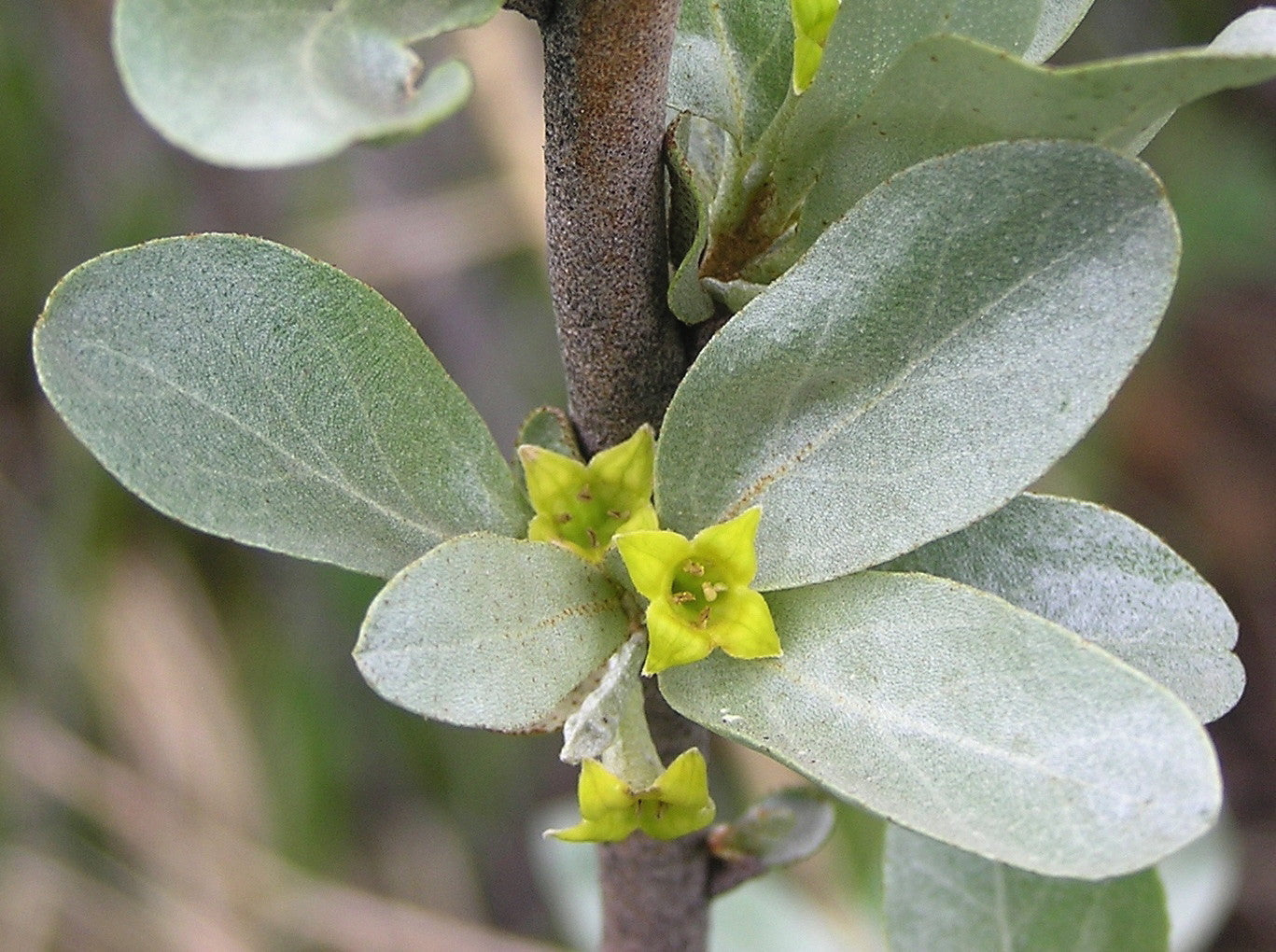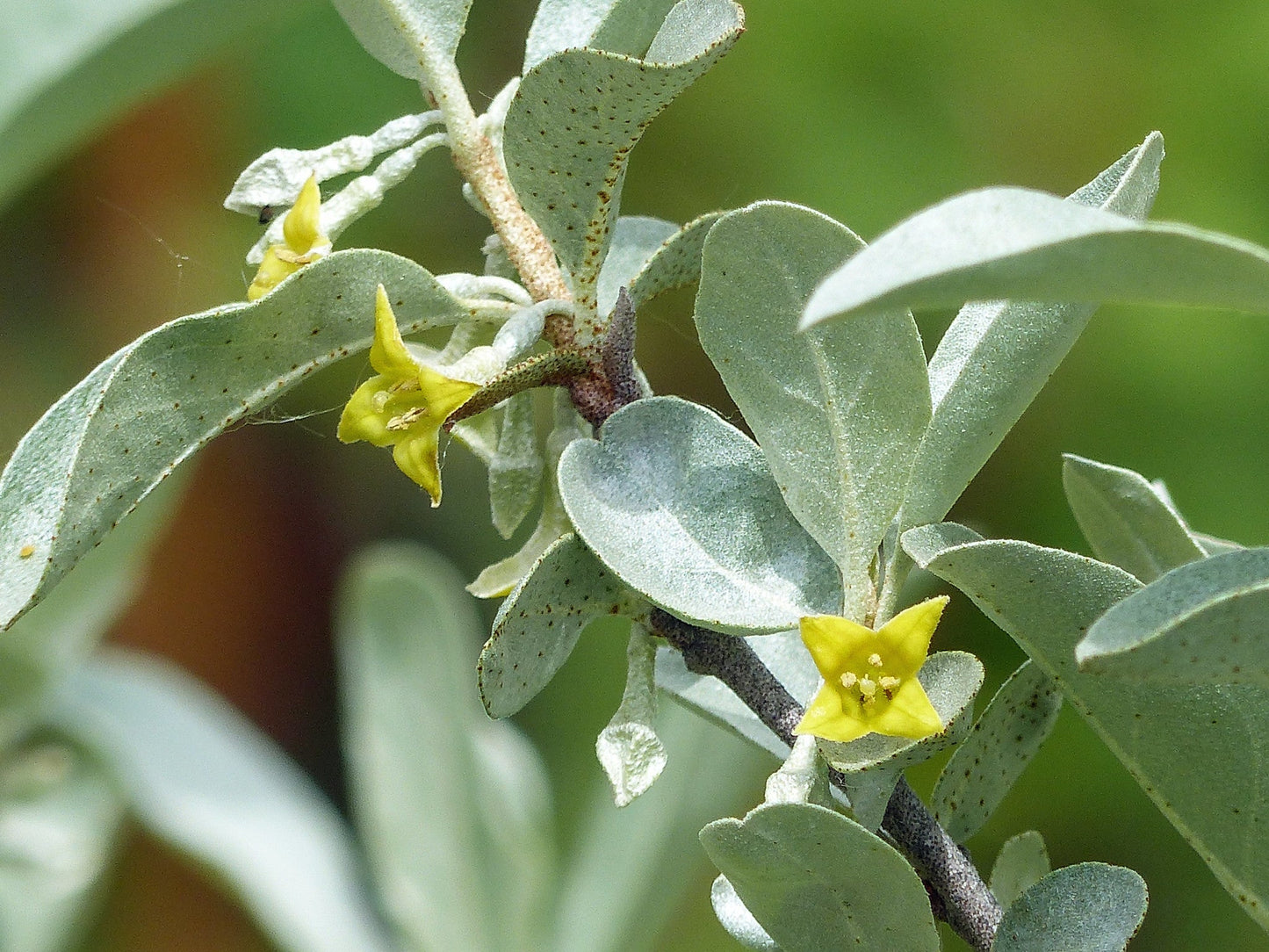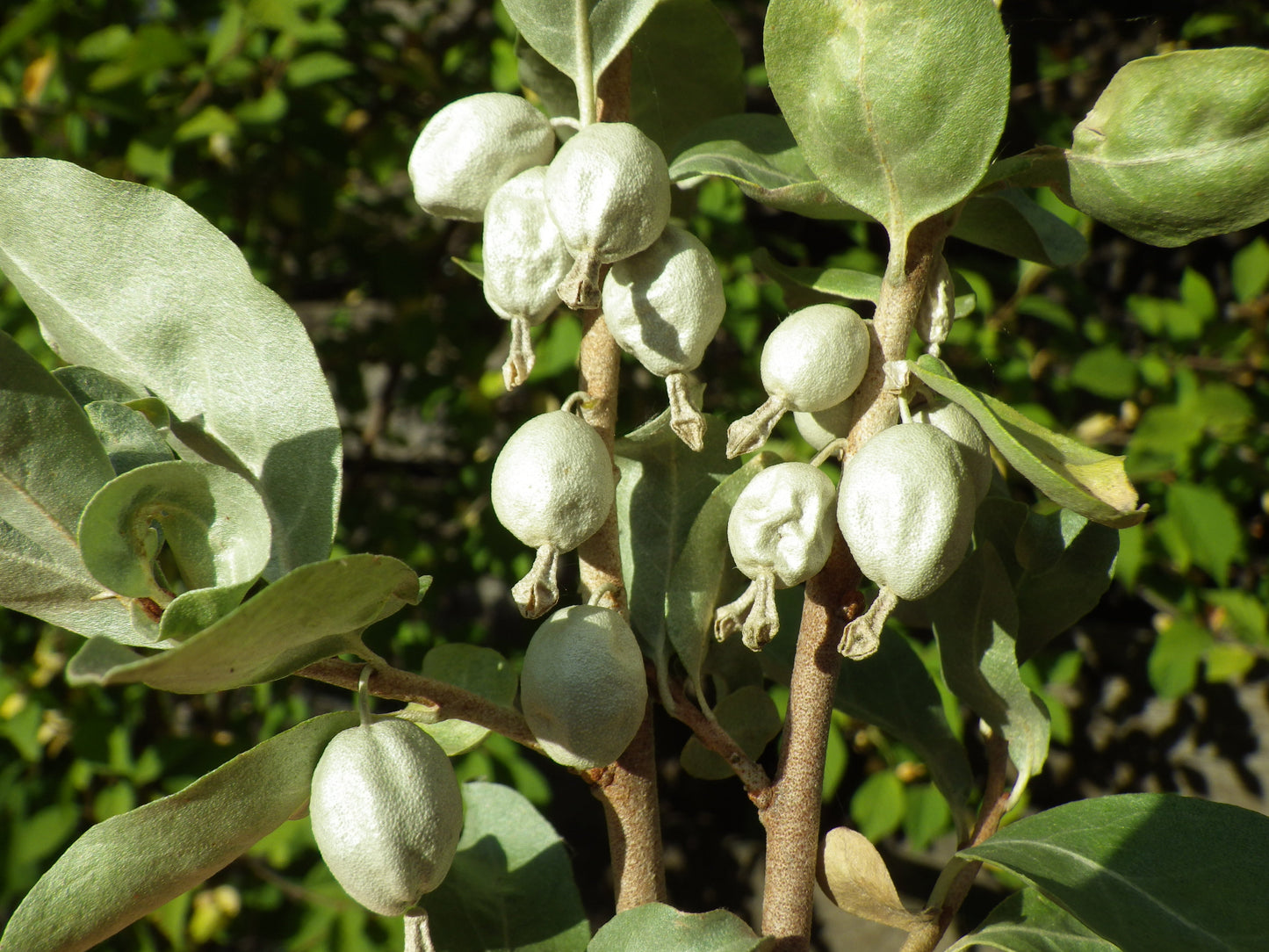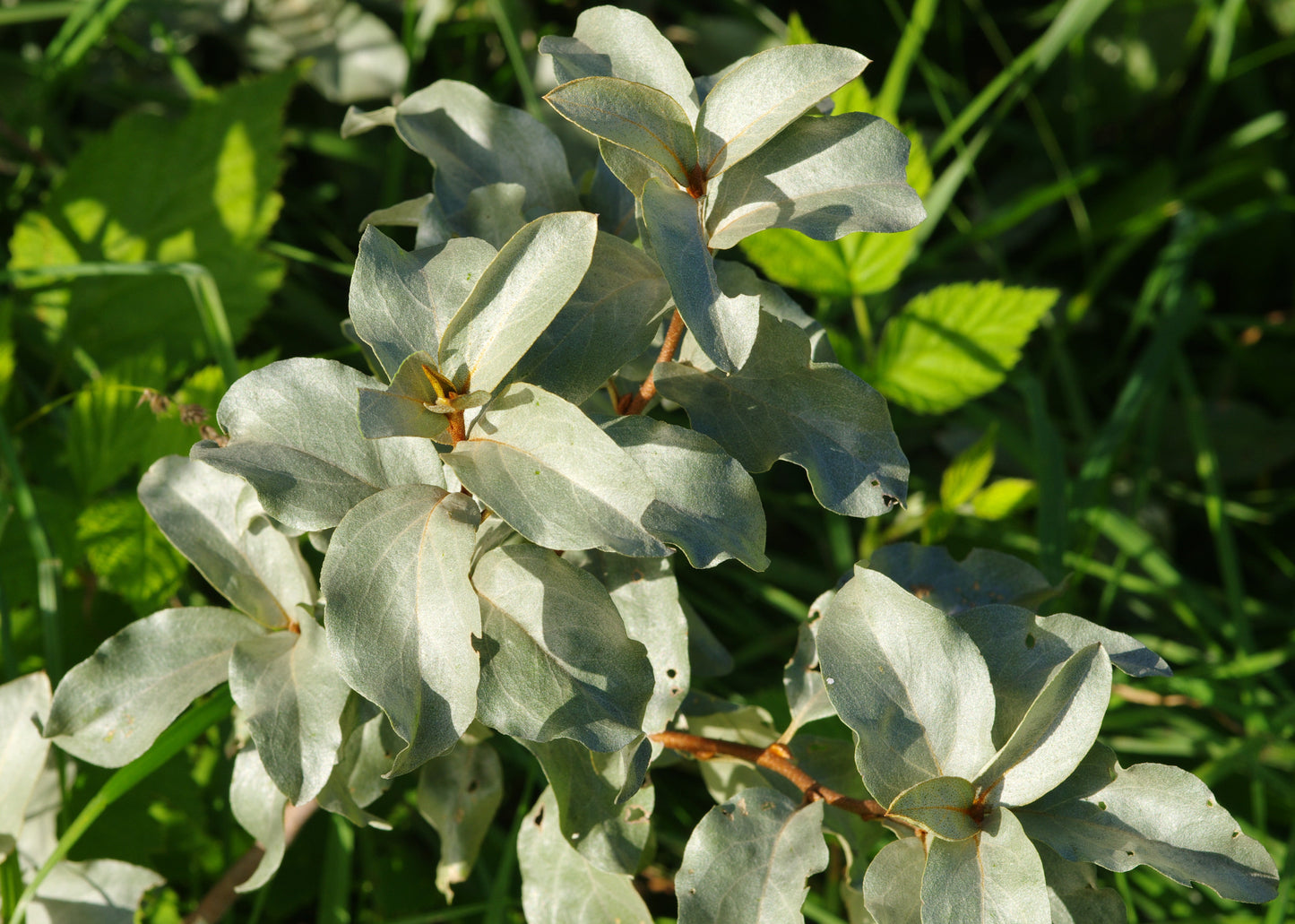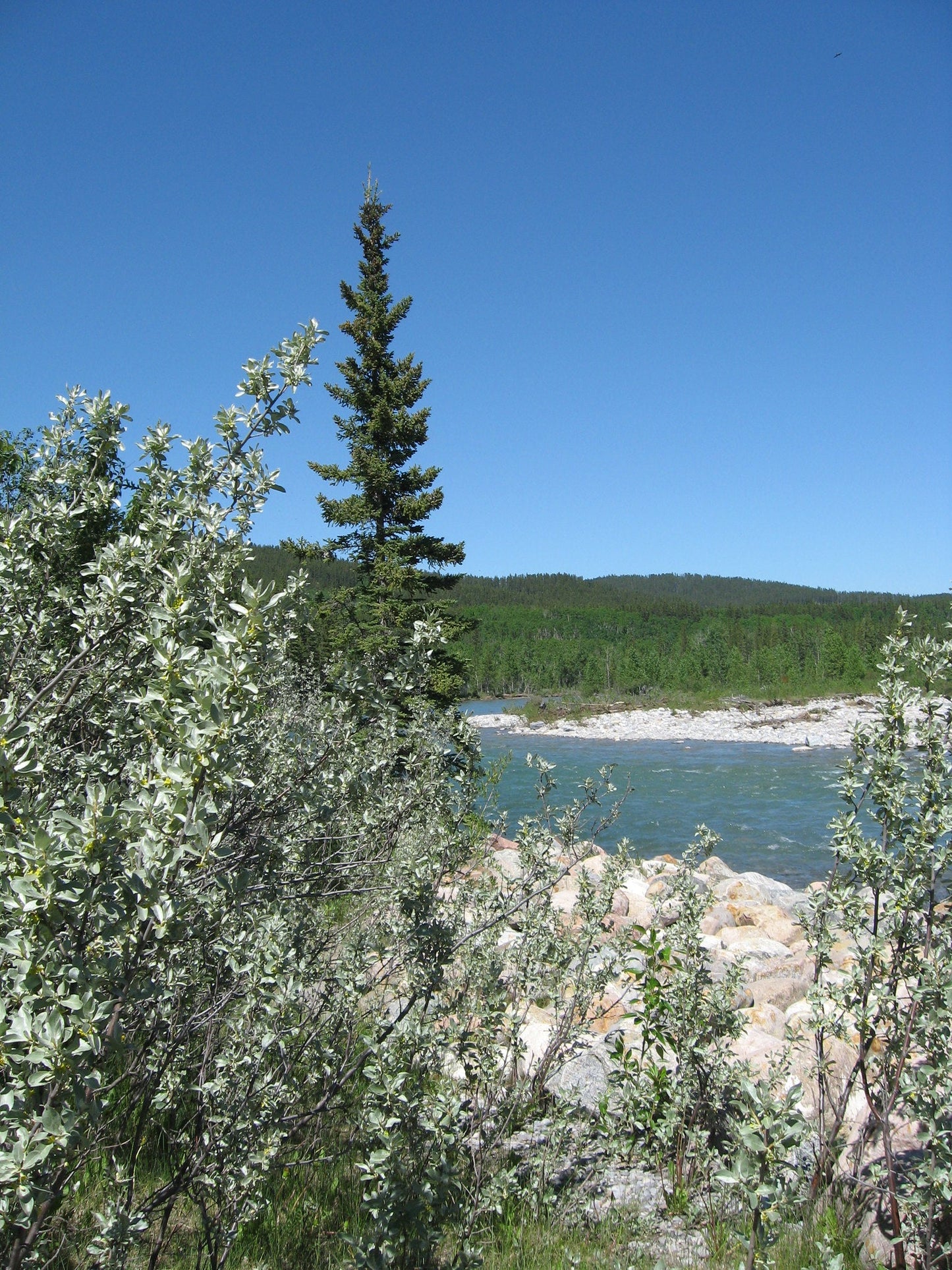Floridaseeds
Silverberry Elaeagnus commutata 50 Seeds
Silverberry Elaeagnus commutata 50 Seeds
Couldn't load pickup availability
The Silverberry is a deciduous shrub that is native to western North America. It is a very cold and drought hardy plant that grows in dry, arid regions where few other plants can grow. It is widely cultivated in these regions as an ornamental plant for its silvery foliage. It is a shrub or a small tree with a rounded, upright form. It grows up to 12 feet in height. Flowers are fragrant and yellow, with 4 corolla lobes. Grows in dry to moist, sandy and gravelly soils in steppes, meadows and forest margins. Occurs from Alaska and Canada south to Utah, Texas and Kentucky. Fruits and seeds are edible raw or cooked. They are good in soups and jams. They are a rich source of vitamins, minerals and essential fatty acids, which are rarely found in fruits. The fibrous bark has been used to make rope, cloth and blankets. The silverberry, like many legumes, fixes nitrogen and enriches the soil. Also known as the wolf berry. Hardy in zones 2-6.
Growing Instructions for the Silverberry
The seeds have a period of dormancy. They can be planted outdoors in the fall or winter for spring germination or they can be cold stratified to simulate winter conditions and to break their dormancy at any time of the year. 1. Soak the seeds in warm water for 12 hours. 2. Place the seeds in a plastic bag and seal it. Store the bag in a refrigerator for 1-2 months. 3. The seeds like moist, well-drained soil. Use a sterile seed starter mix, if available. It prevents soil fungi from damaging the seeds and the seedlings. If not available, then make a mixture of half potting soil and half sand, perlite or vermiculite. Put the soil in a pot. 4. Sow the seeds ¾ of an inch deep. 5. Water the mixture so that it is moist but not wet. 6. Place the pots in an area with warm temperatures in full sun or part shade. 8. When the seedlings are a few inches tall, they can be transplanted.







